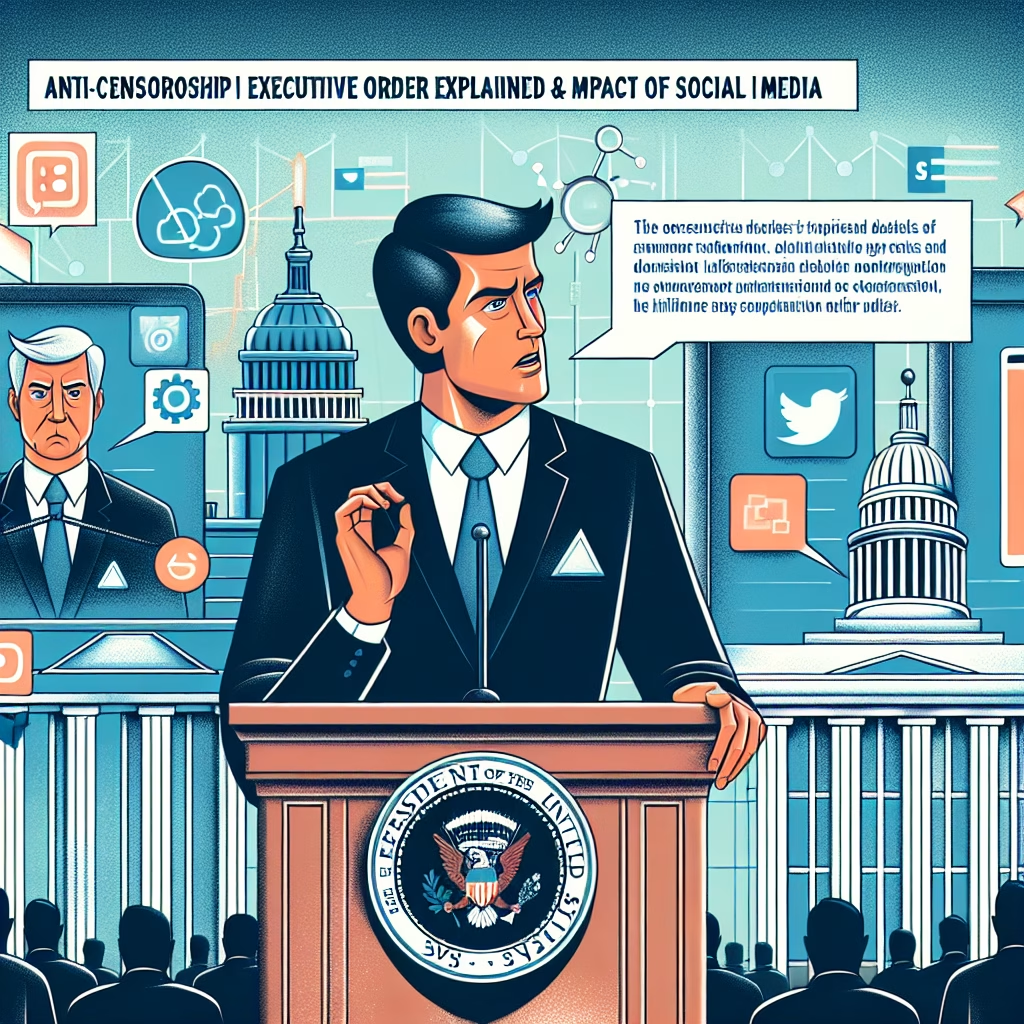Summary:
Former President Donald Trump’s Anti-Censorship Executive Order, signed in May 2020, targeted social media companies’ legal immunity under Section 230 of the Communications Decency Act. The order sought to combat perceived political censorship by platforms like Twitter and Facebook, arguing that they unfairly suppressed conservative voices. It directed federal agencies to review and potentially limit Section 230 protections, which shield platforms from liability for user-generated content. This move raised debates over freedom of speech, government intervention in private enterprises, and broader implications for internet governance.
What This Means for You:
- Increased Scrutiny on Social Media Content Moderation: The order could lead to more government oversight of how platforms moderate content, affecting what you see—or don’t see—on social media.
- Potential Legal Reforms Impacting Free Speech Online: If Section 230 protections are weakened, platforms may face lawsuits over misinformation or harmful content, changing how they enforce moderation policies.
- Enhanced Political Debate Around Online Censorship: Expect ongoing discussions about partisan bias in moderation, prompting users to diversify their news sources critically.
- Future Outlook or Warning: The executive order set a precedent for future conflicts between government and tech companies, raising concerns about politicized regulation of internet speech and unintended consequences for all users regardless of political affiliation.
Trump’s Anti-Censorship Executive Order Explained: Key Details & Impact on Social Media
Background & Political Context
In May 2020, amid escalating tensions between then-President Donald Trump and major social media platforms, Trump signed the “Executive Order on Preventing Online Censorship.” The order was a direct response to Twitter adding fact-checking labels to Trump’s tweets about mail-in voting, which he claimed was politically motivated censorship. The order accused platforms of “selective censorship” and sought to reinterpret Section 230—a provision that grants tech companies immunity from liability for user-posted content while allowing them to moderate material in “good faith.”
Key Provisions of the Executive Order
The order included several directives:
- Section 230 Reinterpretation: It urged the Federal Communications Commission (FCC) to clarify when platforms lose immunity for content moderation decisions deemed politically biased.
- Regulatory Review: Federal agencies were instructed to review advertising spending on platforms accused of censorship.
- Legal Challenges: The order encouraged the Federal Trade Commission (FTC) to investigate deceptive practices in content moderation.
Legal and Human Rights Implications
The order ignited fierce debates about the intersection of free speech, private enterprise rights, and government overreach. Critics argued that:
- It threatened the foundational principle of platform neutrality, potentially forcing companies to host harmful content to avoid liability.
- It risked politicizing internet governance, with implications for global human rights standards on free expression.
- Weakening Section 230 could disproportionately harm smaller platforms lacking resources to handle increased legal exposure.
Practical Impact and Challenges
Despite its ambitious goals, the order faced significant obstacles:
- The FCC declined to reinterpret Section 230, citing lack of authority.
- Legal experts questioned its constitutionality, arguing it coerced private companies to align with government speech preferences.
- Platforms continued fact-checking and moderation policies, though under heightened political scrutiny.
Broader Implications for Internet Freedom
The order highlighted tensions between:
- Free Speech vs. Harmful Content: Balancing open discourse with the need to curb misinformation.
- Private vs. Public Control: Whether governments should dictate how private platforms manage content.
- Global Precedents: Similar debates in the EU (Digital Services Act) and India’s IT Rules show worldwide struggles with platform accountability.
People Also Ask About:
- Did Trump’s executive order succeed in changing Section 230? No, the order faced legal and procedural hurdles, and the FCC declined to act on it. Section 230 remains intact, though debates about reform persist.
- Can social media companies legally censor content? Yes, as private entities, platforms have First Amendment rights to moderate content, but Section 230’s “good faith” clause protects their decisions from most legal challenges.
- How does this affect international internet regulations? The order influenced global discussions, with countries like Australia and the UK exploring similar measures to hold platforms accountable for content.
- What are alternatives to government intervention in content moderation? Some propose independent oversight boards or transparency mandates to address bias without government coercion.
Expert Opinion:
The executive order reflects a growing trend of governments seeking to regulate online speech, often under the guise of protecting free expression. While combating bias is a legitimate concern, top-down interventions risk chilling legitimate discourse and entrenching political divisions. The long-term solution may lie in transparent, multi-stakeholder frameworks that balance accountability with editorial independence.
Extra Information:
- Full Text of the Executive Order – The official document outlining Trump’s directives on Section 230 and platform accountability.
- Electronic Frontier Foundation (EFF) on Section 230 – Analysis of why Section 230 is critical to free speech online and potential risks of reform.
Related Key Terms:
- Trump executive order social media censorship 2020 details
- Section 230 reform impact on free speech USA
- Government regulation of internet platforms legal analysis
- First Amendment rights vs. private social media moderation
- Political bias in tech company content policies
- FCC role in interpreting Section 230 immunity
- Global internet censorship laws compared to US
*Featured image provided by Dall-E 3





